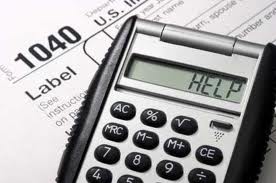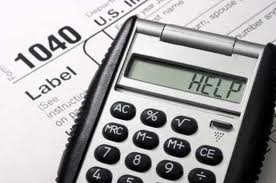 Are you trying to figure out some of the tax issues of your new online or home business? If so, you are a wise business owner. Failure to save for and pay taxes is one of the biggest reasons small businesses fail.
Are you trying to figure out some of the tax issues of your new online or home business? If so, you are a wise business owner. Failure to save for and pay taxes is one of the biggest reasons small businesses fail.
Taxes are behind so many small business failures because of the difficulty in calculating how much money to set aside for them. In addition, the combined tax rate on sole proprietors is among the highest of any type of taxpayer. When you combine these two facts, it becomes a recipe for tax disaster if it’s not handled correctly.
So while tax law is very complicated and I can’t teach you everything in one sitting, I can give you some basic rules that should keep you safe.
First of all, there are generally two ways that businesses are taxed. One is as a percentage of gross sales. The other is on net income. Your situation will depend on what state your business is located in.
Tax on gross sales generally happens at the state level. That means that with limited exceptions, there are no deductions against this type of tax. So if you have $50,000 of sales in your business and the tax rate is 2%, you will need to set aside $1,000 for this tax.
Sales tax is another type of tax that occurs at the state level and is based on gross sales. If you sell a product (services are not usually subject to this tax but check your state law to be sure) then you are required to collect sales tax and pay it to your state. In my practice, this is the state tax that gets people in the most trouble.
It’s usually a pretty large portion of the sale price. Since it just gets mixed in with the sales, it’s very easy to lose track of and spend.
If these sales tax dollars have been spent when it comes time to pay, the business instantly becomes in debt to the state. Penalties and interest add up very fast and can quickly overwhelm a small business. So find out what’s required in your state. Then be very careful to set the money aside whenever you collect any sales tax.
Taxes on net income happen at the federal and state level. Not all states have a net income tax though so check with yours to make sure. Net income is just your total sales less your deductible expenses.
In the United States, taxes at the federal level are the same no matter where you live. They can vary a great deal though, depending on what type of entity your business is. An entity is a sole proprietorship, partnership, s-corporation, c-corporation, LLC, etc.
Since most small businesses start as sole proprietorships I will limit the discussion to them in this article. Generally you’ll know what type of entity you are by the paperwork you filed to get your business started.
Sole proprietors are subject to two main taxes at the federal level. The first is the all familiar federal income tax. The second is self-employment tax which is also called social security. Both taxes are calculated on your net income, not your gross sales. So when calculating these taxes it’s important to know your deductions so you can make an accurate estimate.
As a general rule, everything that’s necessary (within reason) to conduct your business affairs is deductible for taxes. This is a general rule though with lots of exceptions so your calculations will probably not be perfect until you actually prepare your taxes. Don’t be overly concerned about this though. This calculation is only for estimating and will not effect your actual tax liability
Let’s talk a little about some of the bigger, more common exceptions. Probably the most common, and one the IRS likes to pick on, is entertainment and meals. Even if there is a reasonable business purpose, these expenses are only 50% deductible. Without a business purpose, they’re not deductible at all.
Another IRS favorite is auto expenses. This is a complicated tax subject by itself so here’s the simple of it. You can use actual expenses or the standard mileage rate. Whichever you choose, you can only deduct the business portion.
If using actual expenses the business portion is calculated by multiplying all the auto expenses by the business use percent. If using the standard mileage rate, simply multiply the business miles by the rate allowed. In 2011 the rate is fifty cents per mile.
If you are uncertain about any business expense, it’s best to leave it out of this calculation so you don’t underestimate the amount of tax to set aside.
Now that you have an estimate of net income you can do a rough estimate of the taxes. Self-employment tax is the easiest so let’s start with that. The amount of this tax will simply be 15.3 percent of your net income. For 2011 12.4% of this tax stops after you reach $106,800 of net income from your business.
The federal income tax is much more difficult because it depends on many factors. It’s calculated on your total income minus your total deductions and personal exemptions. If you have other types of income, it’s quite difficult to know exactly how much will be due until you file your return.
So if you have a job besides your business, a working spouse, or significant other income, these estimates will be very rough. If you are entitled to any federal tax credits this will also affect the estimate.
Always remember that your estimate for federal income tax is in addition to self-employment tax, not in place of it.
If you are single, or married and filing separately from your spouse, and your taxable income (net income less deductions and exceptions) is less than $35,000, you should set aside 15%. Between $35,000 and $84,000 set aside approximately $5,200 plus 28% of the amount over the $35,000.Between $84,000 and $175,000 set aside approximately $19,000 plus 31% of the amount over $84,000. If it’s more than that, it’s probably best to see your tax adviser or consult a more in-depth publication.
If married filing jointly and taxable income is less than 58,000, set aside 15%. Between $58,000 and $140,000 set aside approximately $8,650 plus 28% of the amount over $58,000. If $140,000 to $212,000 set aside approximately $31,600 plus 31% of the amount over $140,000. Again, if income is more than this, you should consult your tax adviser or a more in-depth publication.
If all this seems to complicated for you, or you just don’t have time to go through this calculation, here is a much quicker method. Just set aside 50% of everything you earn. This will likely be far more than you need, but at least you won’t come up short.
I should probably mention one other thing here. When calculating total income for the beginning of this calculation, it means total income. Total income means everything you earn. Assume you are selling products from another company online and they send you your profits after deducting the cost of the product from your sales. Your total income is not the amount they send you. It’s the total sales dollars!
When you prepare your tax return, you will need to show this total income. You will also show the total cost of the products as a deduction. While the net income will be the same whichever way you do this, it’s important that the gross sales be shown correctly because of the other taxes mentioned in this article.
Please remember that these calculations are very basic and are intended to give you only a general idea of how much money to set aside.
Finally, remember that there can be many taxes and fees you may be subject to. Most will be much smaller than what we’ve discussed here. Some of these types of taxes are city and county taxes, or licensing fees. To be sure you’ve covered them all, you should contact your state agency that’s in charge of taxation or a competent tax advisor.
If you need more information or would like to see other tax and accounting issues discussed, please leave a comment and tell me what you’d like to know.
If you liked this article, please click the “like” button. If you like the site, please click “like” in the Facebook box in the left margin.
Thanks for visiting and I hope to see you back soon!
.
